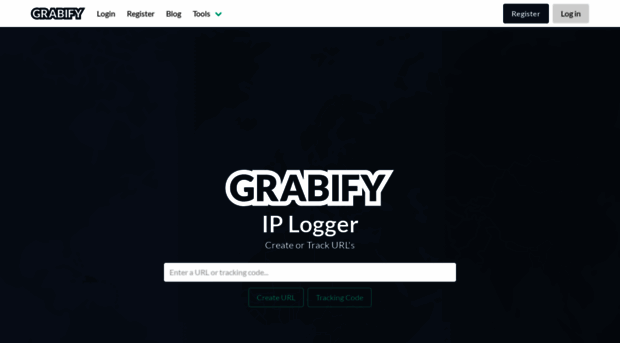Cookies are small text files that store information about how we use our website. Cookies are used by most websites and cannot be accessed without permission from the site owner.
If you’re asking yourself how to create a cookie logger, there’s help here. Cookie loggers are hackers’ friend when it comes to stealing someone’s account and getting away with it. With this article, you’ll learn the important features of a cookie logger and how they work their magic. You’ll also learn how to make your own cookie logger, so that you know what to look out for next time!
This article talks about how to use Python to create a cookie logger in order to hack any account. It discusses what a cookie is and how it works, how you can spy on the cookies on someone’s browser and see all the sites that they visit, and finally gives the code necessary for creating a cookie logger.
What is a Cookie Logger?
A cookie logger is a piece of software that is used to track and record user activity on a website. This information can be used to hack into user accounts or to track and spy on users.
How to Create a Cookie Logger
A cookie logger is a piece of software that allows you to track and record all cookies that are set on your computer. This can be useful for many purposes, such as keeping track of which websites you have visited or for tracking your own personal web usage.
There are many different ways to create a cookie logger. One popular method is to use a program called “Burp Suite.” This software makes it easy to intercept and record all cookies that are set on your computer.
Another way to create a cookie logger is to use a browser extension such as “Cookie Monster.” This extension allows you to view and manage all cookies that are set on your browser.
Once you have created your cookie logger, you can then start to track the cookies that are being set on your computer. For each website that you visit, the logger will record the domain, path, name, value, and expiry date of the cookie. This information can be very useful for many different purposes.
Hacking an Account: Step by Step
Assuming you already have a victim in mind, the first thing you’ll need to do is get their login credentials. This can be done by sending them a phishing email or using a keylogger. Once you have their username and password, you can log into their account and begin wreaking havoc.
If you’re not sure how to create a phishing email or keylogger, don’t worry – we’ve got you covered. Check out our blog post on how to create a phishing email template for step-by-step instructions. As for keyloggers, there are plenty of programs out there that will do the trick (just do a quick Google search).
Once you’re logged into the victim’s account, it’s up to you what you want to do with it. You could start sending messages to all of their contacts, post embarrassing status updates, or even make online purchases in their name. Just remember – once you’re in, there’s no going back, so make sure you know what you’re doing before you start hacking away!
Limitations of a Cookie Logger
There are a few limitations to using a cookie logger as a means of hacking into someone’s account. For one, the cookie logger must be placed on the victim’s computer in order for it to work. This can be done by physically accessing the victim’s computer, or by sending them an email with an infected attachment that, once opened, will install the cookie logger onto their machine.
Another limitation is that the cookie logger will only work if the victim is logged into the account you’re trying to hack at the time they visit the site where the cookie logger is installed. So, if you’re trying to hack into someone’s Facebook account, for example, and they’re not currently logged in when they visit your malicious website, the cookie logger won’t be able to capture their login information.
Finally, even if you are able to successfully install a cookie logger and capture someone’s login information, there’s no guarantee that you’ll be able to use that information to actually login to their account. The reason for this is that most sites these days use what’s called two-factor authentication. This means that even if you have someone’s username and password, you won’t be able to login to their account unless you also have access to the second factor – typically a code that is sent via text message or email – that is required in order to complete the login process.
Create a Cookie Logger with Python
In this section, we will learn how to create a cookie logger with Python. Cookie logging is a process of capturing web cookies, which are small pieces of data that are sent from a website to a user’s web browser, and storing them for later use.
Cookies can be used to track a user’s browsing activity, login information, and other sensitive data. By creating a cookie logger, we can capture this information and use it to hack into someone’s account.
There are many ways to create a cookie logger with Python. We will use the popular requests library to make our lives easier. Requests is a fantastic library that makes it easy to send HTTP requests and capture responses in Python.
First, we need to install the requests library. We can do this using pip, which is a package manager for Python libraries:
pip install requestsOnce the requests library is installed, we can import it into our Python script:
import requestsNow we are ready to start writing our cookie logger. The first thing we need to do is define a function that will make an HTTP request to a given URL and return the response:
def get_response(url):
r = requests.get(url)
return r.textNext, we need to define a function that will parse the HTTP response and extract the cookies:
def get_cookies(response):
cookies = {}
for line in response.split('\r '):
if '=' in line:
key, value = line.split('=', 1)
cookies[key] = value
return cookiesFinally, we need to write a main function that puts everything together. This function will take a URL as an input and print out the extracted cookies:
if __name__ == '__main__':
url = 'http://www.example.com' # Change this to the URL you want to test
response = get_response(url)
cookies = get_cookies(response)
print(cookies)Find a target
When it comes to hacking, cookies are a goldmine. They can be used to log in tosomeone’s account without their password, and once you have access to someone’s accountyou can do anything you want with it.
That’s why cookie logging is such a powerful tool, and in this article we’re going to show you how to create a cookie logger that can be used to hack any account.
First, you’ll need to find a target. This can be anyone who uses the same computer as you, or someone who you know uses the same browser as you. Once you have a target, you’ll need to get their cookies.
The easiest way to do this is by using a tool like Firesheep, which allows you to intercept cookies over unencrypted WiFi networks. Once you have the cookies, all you need to do is insert them into your own browser and voila! You’re logged in as your target!
Download cookies from the target
Assuming that you have already gained access to the target’s computer, the next step is to download their cookies. Cookies are small text files that are stored on a user’s computer when they visit websites. These files contain information such as the user’s login credentials, preferences, and browsing history.
There are a few different ways to download cookies from the target’s computer. One method is to use a browser extension such as Cookie Manager or EditThisCookie. Another method is to use a tool such as Firesheep or Cookie Cadger.
Once you have downloaded the cookies, you can use them to login to the target’s account on any website where they have previously logged in. This can be used to gain access to their email, social media, bank, and other accounts.
Use the cookie log to access their account
If you want to hack someone’s account, one of the easiest ways to do it is by using a cookie logger. A cookie logger is a piece of software that runs in the background and records all of the cookies that are set on a computer. By doing this, you can get access to someone’s account without them even knowing.
To use a cookie logger, first you need to install it onto the victim’s computer. This can be done by sending them an email with an attachment or by downloading it from a malicious website. Once the cookie logger is installed, it will start recording all of the cookies that are set on the computer.
After a few days, you will have a record of all of the cookies that were set on the victim’s computer. You can then use these cookies to access their account. All you need to do is copy the cookie value and paste it into your browser’s cookie jar. This will give you access to their account as if you were them.
You can use a cookie logger to hack into any account, including social media accounts, email accounts, and even bank accounts. So if you’re looking for a way to hack into someone’s account, consider using a cookie logger.
Conclusion
With this guide, you now know how to create a cookie logger to hack any account. This is a powerful tool that can be used for good or for evil, so use it wisely. Remember to always get permission before you attempt to hack someone’s account, and never use this information for malicious purposes. With these guidelines in mind, go forth and cookie log away!








